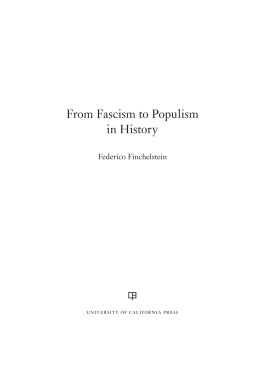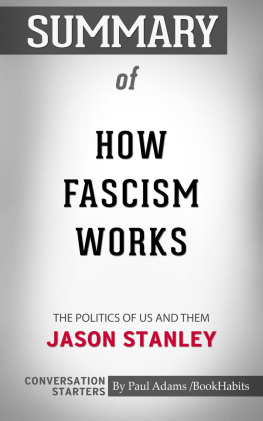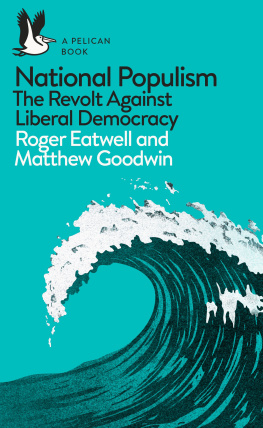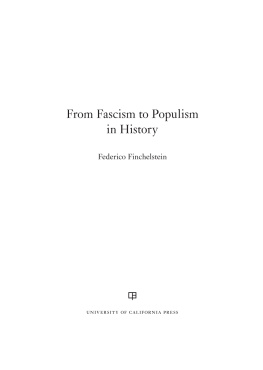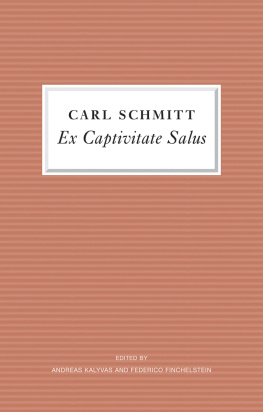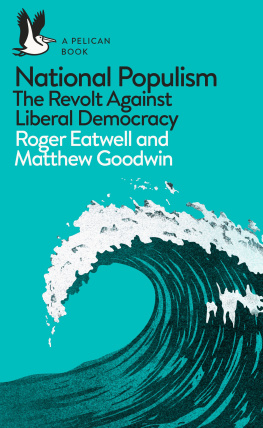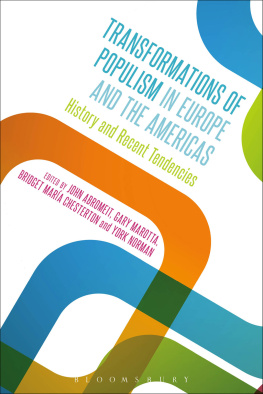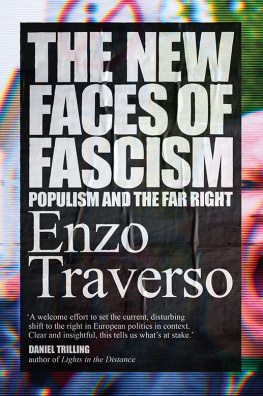PROLOGUE
It is known that personal identity resides in memory, and the annulment of that faculty is known to result in idiocy.
Jorge Luis Borges, History of Eternity (1936)
Some months before Donald Trump became the president of the United States, I found myself in Dresden surrounded by a mix of German neo-Nazi and xenophobic populist demonstrators. I had come to the city with my family to lead a seminar on fascism and populism at the citys university. As fate would have it, we arrived on Monday, the day that the Patriotic Europeans against the Islamization of the West (Pegida) held its weekly demonstration. Racist flags and angry faces encircled us. Literally, one of the most extreme examples of current populism was now standing between the hotel and us. At this point, my eldest daughter, who was eight years old at the time, asked Are these the Nazis that killed Anne Frank? We had visited the Anne Frank Museum in Amsterdam the previous year, and she had been quite affected by her story. No, I answered, they are not her killers, but these neo-Nazis are happy she was killed. The identification of extreme right neo-fascists and populists with Too many people had been disappeared. But like many other citizens, I am asking them now, when populists occupy the global stage.
The first modern populist regime was born in Argentina, not the United States, but lately the worlds greatest power is the one brandishing its populist might to the rest of the globe. This is something many Americans, including most social scientists, had previously deemed impossible. Having lived in the United States since 2001, I have often been told that neither populism nor fascism could ever set foot north of the Rio Grande. But especially now that populism has taken hold in the United States, the global histories of fascism and populism offer key lessons that we should bear in mind as we enter a new era of populism in America and beyond.
If we return populism to its global history, the apparently unexpected can be better understood. This book examines the historical connections between fascism and those in power in the context of populist democracies.
Like other historians who have dedicated their academic lives to the study of fascism and populism, I have always thought studying the past could illuminate the present, and for the last two decades, my work has looked backward to understand the problematic relationships among fascism, populism, violence, and politics. Now the question of fascism and power clearly belongs to the present.
Crisis, xenophobia, and populism characterize our new century. But these traits are not new nor were they simply reborn in our present. To understand the apparent rebirth of populism is, in fact, to comprehend the history of its adoption and reformulation over time. This history starts with fascism and continues with populism in power. If this century has not left behind the history of violence, fascism, and genocide that was so central to the twentieth century, dictatorship, and especially fascistic dictatorships, has nonetheless increasingly lost legitimacy as a form of government. Inflated metaphors of Munich and Weimar aside, we are not witnessing the return of fascism as it existed before. The past is never the present. Yet the current expressions of neofascism and populism have important histories behind them, and the passage from fascism to populism over time has shaped our present. This book argues not only that contextual public and political uses of fascism and populism are key to understanding them but also that studying how these histories have been conceived and interpreted will refresh our awareness and increase our understanding of the current political threats to democracy and equality. Contexts and concepts are key.
This book counters the idea that past and present-day experiences of fascism and populism can be reduced to particular national or regional conditions. It argues against dominant American and Eurocentric views. Especially in light of the historical turning point of Trumps populist victory, tales of American democratic exceptionalism have finally been put to rest. This new age of American populism shows clearly that the United States is like the rest of the world. Similar arguments can be made for French or German democratic culture. We now have no excuse to allow geopolitical narcissism to stand against historical interpretation, especially when analyzing ideologies that cross borders and oceans and even influence each other.
I present a historical take on populism and fascism but also offer a view from the south. In other words, I ask what happens to the center when we think about it from the margins. Neither populism nor fascism is exclusively European, American, or Latin American. Populism is as American as it is Argentine. By the same token, fascism also took hold in Germany and in India. In the United States and in Europe, too many scholars explain the past and present of fascism and populism by narrowly emphasizing the American or European dimensions of what is in fact a global and transnational phenomenon. Decentering the history of fascism and populism does not mean adopting a single alternative explanation for their origins. All histories are important.
What is fascism and what is populism? These questions were first asked by some fascists, antifascists, populists, and antipopulists to validate, criticize, or distance themselves from the perceived common features associated with the terms. Their supporters, Then and now, actors and interpreters alike have agreed that both terms have been counterposed against liberalism; that both involve a moral condemnation of the liberal democratic order of things; and that both represent a mass response advanced by strong leaders in the name of the people, and against elites and politics as usual. But beyond these affinities, and moving past ideal types and the limits of generic interpretations, how have fascism and populism been connected historically and theoretically, and how should we address their significant differences? This book provides historical answers to these questions. While fascism and populism are at the center of political discussions, and are often conflated, they actually represent alternative political and historical trajectories. At the same time, fascism and populism are genealogically connected. They belong to the same history.

